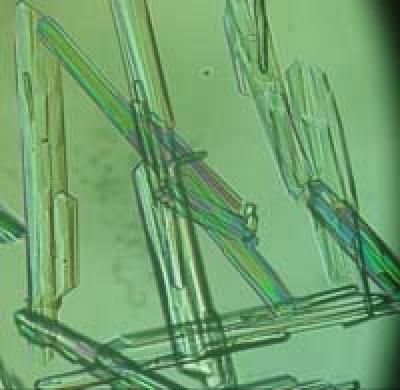The method, developed by engineers at the University of Leeds, is a potentially valuable tool in the production of drugs, in cases where control of the crystal shapes is crucial for both the price and the safety of the product

Pharmaceutical companies could save millions thanks to a new method to control the formation of crystals. The method, developed by engineers at the University of Leeds, is a potentially valuable tool in the production of medicines, in cases where control of the crystal shapes is crucial for both the price and the safety of the product.
Most drugs are crystalline and their exact structure can affect their physical properties and activity. These differences in structures are usually created by slight, invisible changes in the process. "If you try to use a pencil to write on glass, you won't get very far, but if you use a diamond, you can also write your name. This is despite both being pure forms of carbon. The same is true for different solid forms of the same drug; They can have completely different properties," claims Dr. Robert Hammond, the principal researcher from the university's engineering department.
"Pharmaceutical compounds are becoming more and more complex and the challenges involved in their preparation lead to great difficulty in successfully and uniformly obtaining the exact structural form required. Therefore our system has many future possibilities. We are now able to look at the crystals during their formation directly inside the reactor, something that was not done before." The new technology identifies and monitors changes in the crystal structure online, thereby providing a reliable method that guarantees the production of the desired drug. Changes in the structure of the crystal during its processing, known as polymorphism, can cause significant delays in introducing the product to the market, which costs the pharmaceutical companies millions of dollars.
The issue also leads to challenges in protecting the intellectual property of these companies. There have already been several publicized cases in which the validity of patents was put to a legal test by pharmaceutical companies that used a different structural form of the same active ingredient in the drug. "This is an extremely difficult problem for the pharmaceutical companies," explains the lead researcher. "Their patents are extremely important - they are granted for a period of twenty years, but the research and development period itself can last up to ten whole years, so that there is only a decade left to return the financial investment from the development and profit from the patent." The technology developed in Leeds is based on a well-known method for monitoring the structure of crystals - powder X-ray diffraction, the main tool in examining polymorphism. "This upgraded technology has enormous economic potential, in that it can be developed to work on an industrial scale and be also applied in certain fields of chemistry," says the lead researcher.

2 תגובות
Prices
Drug prices will not change...